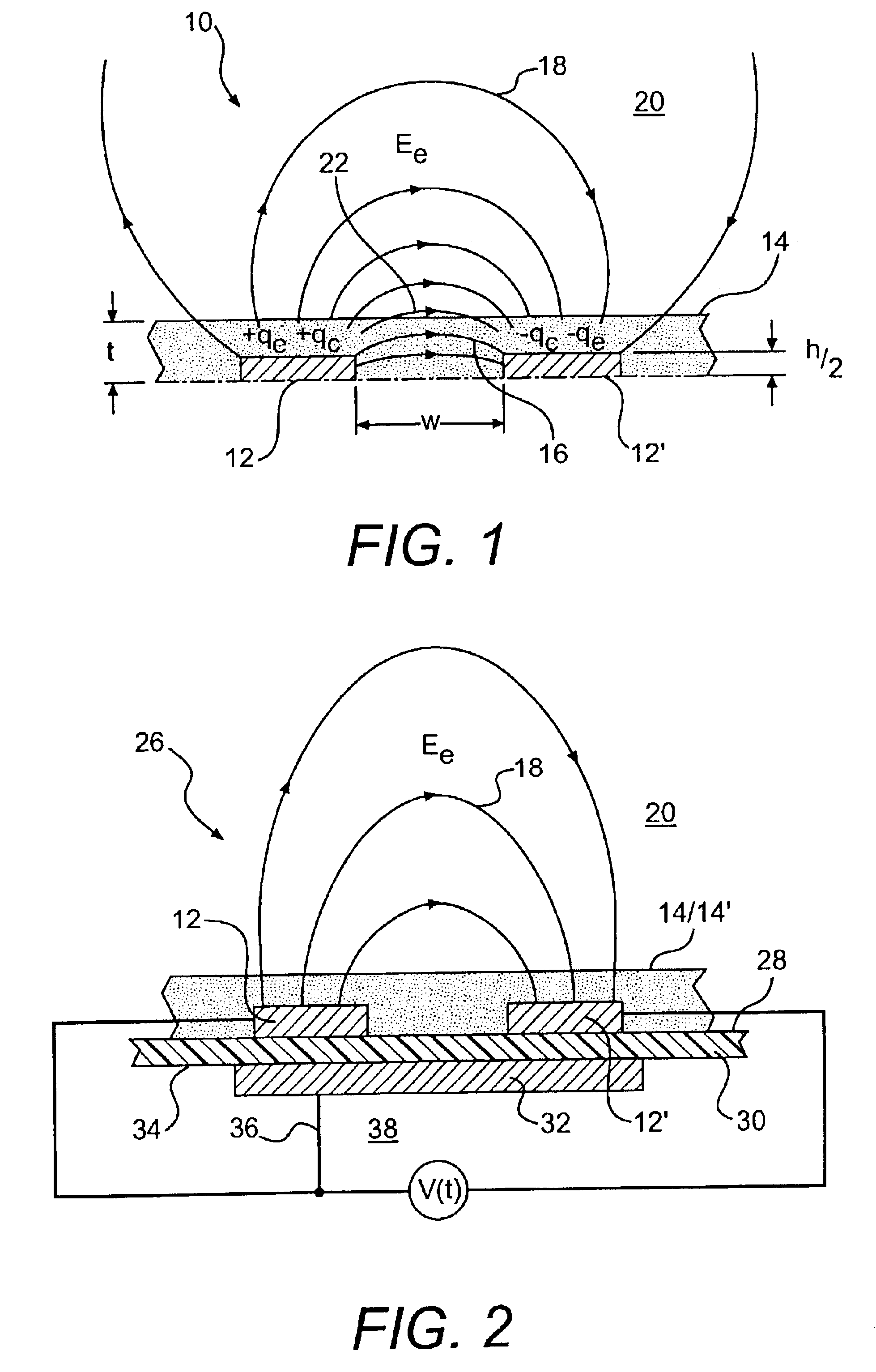Planar capacitive transducer
a capacitive transducer and capacitive technology, applied in the direction of resistance/reactance/impedence, instruments, mechanical means, etc., can solve the problems of loss of calibration, slow response, sensitivity reduction, etc., and achieve the effect of increasing or decreasing surface free energy
- Summary
- Abstract
- Description
- Claims
- Application Information
AI Technical Summary
Benefits of technology
Problems solved by technology
Method used
Image
Examples
Embodiment Construction
FIG. 4A is a top view of first metal layer 42 of capacitor 40 of FIG. 3. Capacitor electrodes generally shown by reference numeral 54 comprise interdigitated fingers etched in metal layer 42. A first planar capacitor electrode comprises a set of fingers 56 connected to a ground bus 58 connected to a wire point pad 60 with a plated through hole 60′. A cooperating capacitor electrode comprises a second set of fingers 62 connected to a sensing bus 64 connected to a wire point pad 66 with a plated through hole 66′. Capacitor 40 is measured by connecting capacitance measurement electronics means between pads 60 and 66. A third wire point pad 68 with a plated through hole 68′ is used to connect an electrical signal to a driven shield 70 etched in a second metal layer 44 shown in FIG. 4B. Capacitor 40 is die-cut to dimensions defined by registration marks 72. The width and spacing of fingers 56 and 62 for flexible circuit embodiments of the transducer can range between 0.001 and 0.006 inch...
PUM
 Login to View More
Login to View More Abstract
Description
Claims
Application Information
 Login to View More
Login to View More - R&D
- Intellectual Property
- Life Sciences
- Materials
- Tech Scout
- Unparalleled Data Quality
- Higher Quality Content
- 60% Fewer Hallucinations
Browse by: Latest US Patents, China's latest patents, Technical Efficacy Thesaurus, Application Domain, Technology Topic, Popular Technical Reports.
© 2025 PatSnap. All rights reserved.Legal|Privacy policy|Modern Slavery Act Transparency Statement|Sitemap|About US| Contact US: help@patsnap.com



